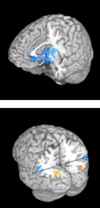Evolutionary mechanisms for loneliness
- PMID: 24067110
- PMCID: PMC3855545
- DOI: 10.1080/02699931.2013.837379
Evolutionary mechanisms for loneliness
Abstract
Robert Weiss (1973) conceptualised loneliness as perceived social isolation, which he described as a gnawing, chronic disease without redeeming features. On the scale of everyday life, it is understandable how something as personally aversive as loneliness could be regarded as a blight on human existence. However, evolutionary time and evolutionary forces operate at such a different scale of organisation than we experience in everyday life that personal experience is not sufficient to understand the role of loneliness in human existence. Research over the past decade suggests a very different view of loneliness than suggested by personal experience, one in which loneliness serves a variety of adaptive functions in specific habitats. We review evidence on the heritability of loneliness and outline an evolutionary theory of loneliness, with an emphasis on its potential adaptive value in an evolutionary timescale.
Figures


References
-
- Achenbach TM. The Young Adult Self-Report. Burlington, VT: Department of Psychiatry, University of Vermont; 1990.
-
- Allen NB, Badcock PBT. The Social Risk Hypothesis of Depressed Mood: Evolutionary, Psychosocial, and Neurobiological Perspectives. Psychological Bulletin. 2003;129(6):887–913. - PubMed
-
- Andersson L. Loneliness research and interventions: a review of the literature. Aging & Mental Health. 1998;2(4):264–274.
Publication types
MeSH terms
Grants and funding
LinkOut - more resources
Full Text Sources
Other Literature Sources
Miscellaneous
